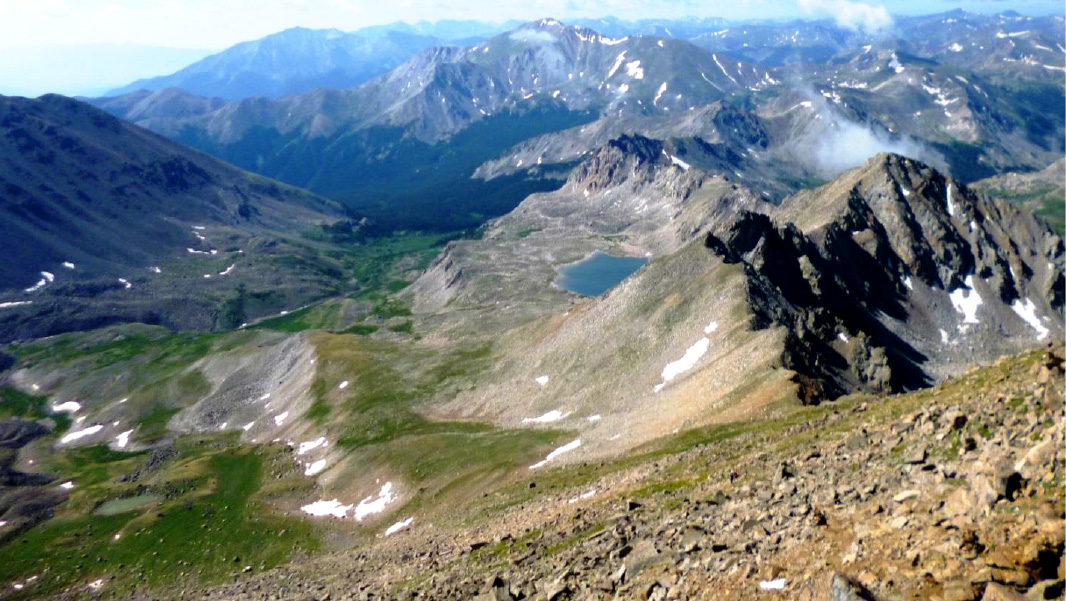Why are Mount Harvard So Prominent?
Unraveling Mount Harvard's Mystique: Exploring its Geological Significance and Cultural Legacy
Mount Harvard

Mount Harvard, standing proudly as the third-highest summit of the Rocky Mountains in North America and the state of Colorado, captivates adventurers and nature enthusiasts alike with its towering presence and breathtaking vistas. With a commanding elevation of 14,421 feet (4,395.6 meters), this prominent fourteener holds a revered place among the Collegiate Peaks and ranks as the fourth-highest summit in the contiguous United States. But what exactly sets Mt Harvard apart and makes it such a prominent feature of the Colorado landscape? In this comprehensive exploration, we delve deep into the geological, historical, and cultural factors that contribute to Mt Harvard’s prominence and significance.
Geological Origins of Mount Harvard
Formation of the Rocky Mountains
To understand the prominence of Mount Harvard, we must first delve into the geological history of the Rocky Mountains. The Rockies, a vast mountain range that spans thousands of miles across North America, are the result of complex tectonic processes that unfolded over millions of years. The uplift of the Rockies began during the Laramide orogeny, a period of mountain-building activity that occurred approximately 70 to 40 million years ago. During this time, immense tectonic forces caused the Earth’s crust to buckle and fold, giving rise to the towering peaks and rugged terrain that define the Rocky Mountains today.
The Sawatch Range and Collegiate Peaks
Mount Harvard is situated within the Sawatch Range, a subrange of the Rocky Mountains known for its numerous high peaks and rugged terrain. The Sawatch Range is characterized by its dramatic topography, which includes deep valleys, steep ridges, and towering summits. Among the peaks of the Sawatch Range, the Collegiate Peaks stand out for their prominence and grandeur. Mt Harvard, as the highest summit of the Collegiate Peaks, holds a special place in the landscape, commanding attention with its towering stature and majestic presence.
Cultural and Historical Significance
Naming of Mount Harvard
The naming of Mount Harvard reflects its significance and prominence in the Colorado landscape. The peak was named in honor of Harvard University, one of the oldest and most prestigious universities in the United States. The naming of Mt Harvard is a testament to the admiration and respect that early explorers and settlers held for the mountain, recognizing its importance as a landmark and natural wonder. Just as we know Why are Mount Whitney So Prominent?
Indigenous Perspectives
Before the arrival of European settlers, the land that is now home to Mount Harvard was inhabited by indigenous peoples who had deep connections to the natural world. While specific details about the indigenous peoples’ interactions with Mt Harvard are limited, it is likely that the mountain held cultural and spiritual significance for these communities. Mount Harvard, like other prominent landmarks in the Rocky Mountains, may have been revered as a sacred place or used as a navigational marker and gathering site.
Environmental Significance and Conservation
Biodiversity and Habitat
Mount Harvard and the surrounding Sawatch Range are home to a diverse array of plant and animal species, thanks to the range’s varied elevation, climate, and topography. From alpine meadows and spruce-fir forests to rugged peaks and high-altitude tundra, the Sawatch Range provides habitat for a wide range of wildlife, including elk, mule deer, bighorn sheep, and golden eagles. Protecting the biodiversity of the Sawatch Range, including Mt Harvard, is essential for preserving the region’s ecological integrity and supporting healthy ecosystems.
Conservation Efforts
In recent years, efforts have been made to conserve and protect the natural resources of the Sawatch Range, including Mount Harvard. Organizations such as The Nature Conservancy, Colorado Fourteeners Initiative, and Rocky Mountain Field Institute work to preserve critical habitat, restore degraded ecosystems, and promote sustainable recreational use of the area. These conservation efforts are vital for ensuring that future generations can continue to enjoy the beauty and wilderness of Mt Harvard and the surrounding landscape.
Recreational Opportunities and Outdoor Adventure
Hiking and Climbing
Mount Harvard offers a variety of recreational opportunities for outdoor enthusiasts, including hiking, climbing, and backcountry exploration. The peak can be accessed via several established trails, each offering its own set of challenges and rewards. Popular routes include the South Slopes Route, North Cottonwood Creek Trail, and Horn Fork Basin Route. Summiting Mt Harvard is a challenging yet rewarding adventure that provides stunning views of the surrounding Rocky Mountains and a sense of accomplishment for those who reach the top.
Wilderness Experience
For many visitors, the allure of Mount Harvard lies not only in its physical prominence but also in the opportunity to immerse themselves in the beauty and solitude of the wilderness. The Sawatch Range offers a pristine and remote landscape where visitors can experience the sights and sounds of nature in their purest form. Whether hiking through alpine meadows, traversing rocky ridgelines, or camping beneath star-filled skies, exploring Mt Harvard and the surrounding area provides a chance to connect with the natural world and find solace in its untamed beauty.
Conclusion
Mount Harvard’s prominence in the Colorado landscape is a testament to its geological significance, cultural heritage, and environmental importance. As the third highest summit of the Rocky Mountains and the highest peak in the Collegiate Peaks, Mt Harvard commands attention with its towering stature and majestic beauty. Whether admired from afar or summited by adventurous souls, Mount Harvard serves as a symbol of the untamed wilderness and the enduring spirit of exploration that defines the Rocky Mountains. As we continue to cherish and protect this iconic peak, may Mt Harvard inspire future generations to seek out adventure, connect with nature, and embrace the wonders of the natural world.




